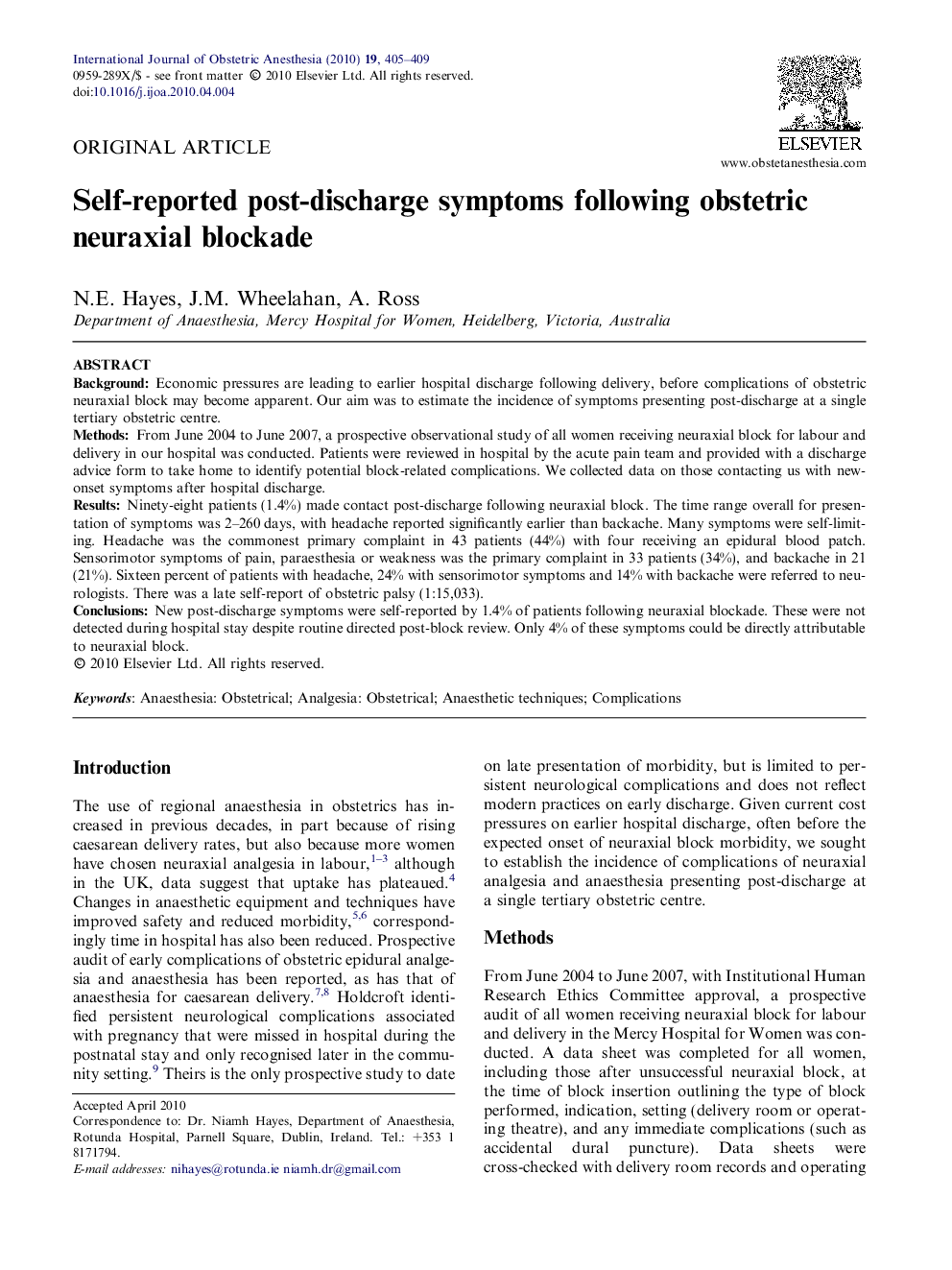| Article ID | Journal | Published Year | Pages | File Type |
|---|---|---|---|---|
| 2758244 | International Journal of Obstetric Anesthesia | 2010 | 5 Pages |
BackgroundEconomic pressures are leading to earlier hospital discharge following delivery, before complications of obstetric neuraxial block may become apparent. Our aim was to estimate the incidence of symptoms presenting post-discharge at a single tertiary obstetric centre.MethodsFrom June 2004 to June 2007, a prospective observational study of all women receiving neuraxial block for labour and delivery in our hospital was conducted. Patients were reviewed in hospital by the acute pain team and provided with a discharge advice form to take home to identify potential block-related complications. We collected data on those contacting us with new-onset symptoms after hospital discharge.ResultsNinety-eight patients (1.4%) made contact post-discharge following neuraxial block. The time range overall for presentation of symptoms was 2–260 days, with headache reported significantly earlier than backache. Many symptoms were self-limiting. Headache was the commonest primary complaint in 43 patients (44%) with four receiving an epidural blood patch. Sensorimotor symptoms of pain, paraesthesia or weakness was the primary complaint in 33 patients (34%), and backache in 21 (21%). Sixteen percent of patients with headache, 24% with sensorimotor symptoms and 14% with backache were referred to neurologists. There was a late self-report of obstetric palsy (1:15,033).ConclusionsNew post-discharge symptoms were self-reported by 1.4% of patients following neuraxial blockade. These were not detected during hospital stay despite routine directed post-block review. Only 4% of these symptoms could be directly attributable to neuraxial block.
